
Big Trains
To read about toy & model trains, go here.
Hangover: The only major accident for Santa Fe Railroad's iconic Super Chief was on January 25, 1948 when locomotive number 19L lost its braking ability while preparing to depart Los Angeles Union Passenger Terminal.
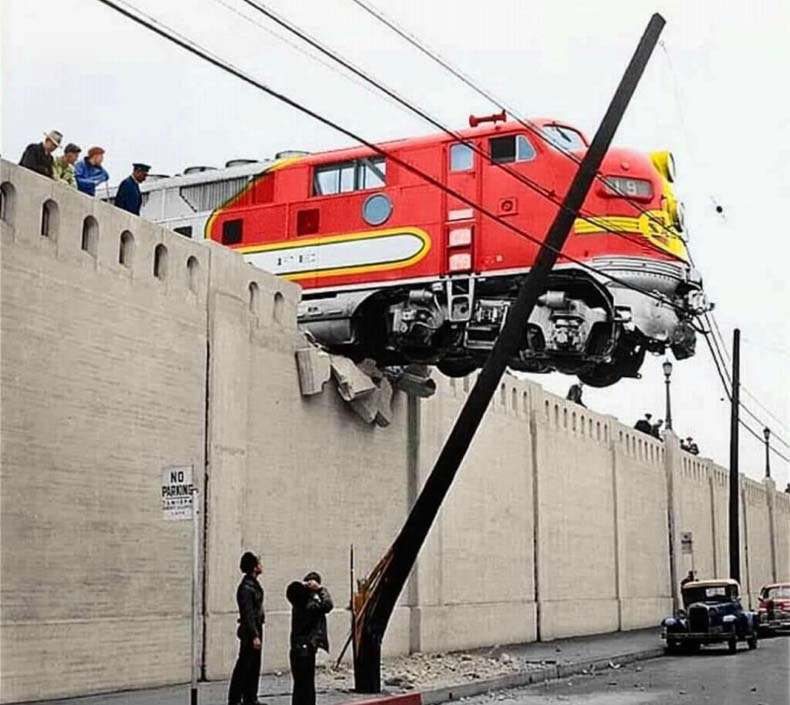
It crashed through a steel bumper post and then a concrete wall located at the end of the dead end track and ultimately came to a rest with the front half of the locomotive dangling 20 feet above the street below.
No one on board was injured. This locomotive almost dropped in for lunch at the famous Philippe's The Original French dip sandwich shop across the street. It took 5 hours and a 250-ton crane to get the locomotive back on the track and then over to the roundhouse for inspection. (posted 4/6/21, permalink)
Book Review: 'The American Steam Locomotive in the Twentieth Century' by Tom Morrison
This 624-page book thoroughly covers its subject. You'll find little mention of the early days of railroading, nor of 19th Century westward expansion. This book focuses on its subject, so there's not a lot of information about electric locomotives, nor are diesels covered in detail. This is about steam - from the small yard switchers to the powerful Mallets and articulateds. The various engineering efforts and 20th Century developments such as roller bearings, compounding and superheated steam are reviewed in depth. The level of detail is ... (more >>>)
Chug, Chug, Chug, Chug … Woooooooo … Woooooooo: A very nice video of the fully-restored Union Pacific 'Big Boy' 4-8-8-4 steam locomotive in action is posted on Jesse Bowers' Just A Car Guy website.

The Big Boy's engine and tender total 133 feet in length. (posted 6/5/19, permalink)
Money Train: Warren Meyer of Coyote Blog noted that privately-owned "American railroads are a model of capitalism, one of the least-subsidized forms of transportation in the world. They are profitable and do far more for the national economy than Europe's socialized railroads, which mainly serve narrow elites."
Warren is referring to America's freight railroads (Norfolk Southern, Chessie, Union Pacific, BNSF, et al). Passenger railroads are either quasi-governmental (Amtrak) or small, privately-run tourist lines. In the U.S., except for WWII, per capita rail passenger miles peaked in 1919.
The Pennsylvania Railroad's experience was typical. Like the rest of the nation's railroads, the Pennsy had not earned a profit from passenger service since 1946, despite multi-million dollar investments in passenger equipment and facilities in the years following World War II. Competition from the use of automobiles for medium-distance intercity trips prevented the railroads from increasing fares enough to cover soaring labor and material costs.
The unprofitable passenger end of the business was eventually dumped on Amtrak.
Meyer continued, "The average Amtrak passenger car weighs about 65 tons. The capacity of a coach is 70-80 passengers, which at an average adult weight of 140 pounds yields a maximum passenger weight per car of 5.6 tons. This means that just 8% of the fuel in a passenger train is being used to move people, the rest goes into moving the train itself. Now consider a freight train. The typical car weight 25-30 tons empty and can carry between 70 and 120 tons of cargo. This means that 70-80% of the fuel in a freight train is being used to move the cargo. This is why the supposedly-green folks' denigrating of U.S. rail is so crazy to me. The U.S. rails system makes at least as much sense as the European system."
Employment at major U.S. railroads plummeted from 1.35 million in 1947 to 152,000 in 2016. But because of greater efficiency and a laser-like focus on profitability of freight operations, U.S. railroads are profitable and thriving. Almost all large U.S. railroads now focus on long-mileage, point-to-point haulage of carload lots of merchandise. They leave the shorter routes, smaller shipments and intracity delivery to the truckers.
In the book 'Big Money Thinks Small: Biases, Blind Spots, and Smarter Investing', Joel Tillinghast wrote, "With diesel locomotives and double-stacked containers, railroads move almost three times the ton-miles at higher speeds by fewer employees on less track. Behind the scenes, routing, scheduling safety, and track maintenance have been automated and computerized."
In 1964, the operating profit margin of the Pennsylvania Railroad and New York Central averaged 27%. Fifty years later, their successor company, Norfolk Southern produced a 31% OPM. (posted 6/15/18, permalink)
Fast Commuting: The Philadelphia and Western Railroad was a high-speed, third rail-operated, commuter-hauling interurban electric railroad operating in the western suburbs of Philadelphia. The line opened in 1907.
When commuting to college in the early 1960s, I sometimes used the P&W (nicknamed the Piss & Whistle), connecting from the PTC 69th Street Market-Frankford Elevated Line terminal and getting off at the Villanova station stop which was next to the campus parking lot.
The P&W was as a double-track third rail line and was mostly served by Brill Bullets, the innovative interurban self-propelled cars built by Philadelphia's J.G. Brill Co. The Bullets ran in service from 1931 to the late 1980s. They regularly ran at 80–85 mph in normal passenger service (top speed was 92 mph) and were the world's first-ever high-speed 'Bullet' trains. The design influenced later streamlined trains built in the U.S., Belgium, Germany and Japan.
The aluminum-bodied Bullet was the first ... (more >>>)
So Much For High Speed Rail: In the 19th Century, it took private railroad companies six years to lay 1,907 miles of track - including over the Continental Divide - for what was to become the Transcontinental Railroad.
At best, it will now take seven years for California to lay 119 miles of track - on relatively flat ground in the middle of nowhere for the California's High Speed Rail project.
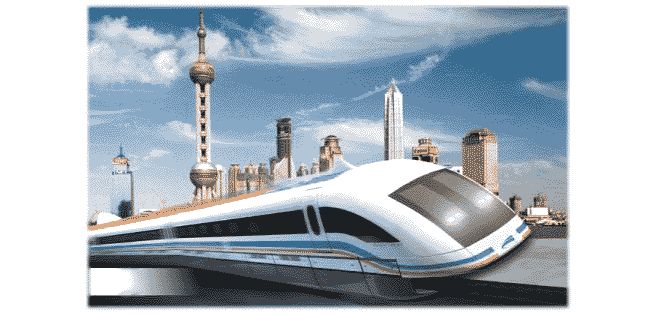
Recently, Virginia Postrel wrote, "The total construction cost estimate has now more than doubled to $68 billion from the original $33 billion, despite trims in the routes planned. The first, easiest-to-build, segment of the system - the "train to nowhere" through a relatively empty stretch of the Central Valley - is running at least four years behind schedule and still hasn't acquired all the needed land."
"Now, courtesy of Los Angeles Times reporter Ralph Vartabedian, comes yet another damning revelation: When the Spanish construction company Ferrovial submitted its winning bid for a 22-mile segment, the proposal included a clear and inconvenient warning: "More than likely, the California high speed rail will require large government subsidies for years to come." Ferrovial reviewed 111 similar systems around the world and found only three that cover their operating costs."
Most of this project is federally funded, so it's your tax dollars at waste. It should be noted that, In 2008, U.S. airplanes logged 583 billion passenger miles, while the entire federally-subsidized Amtrak system accounted for just 6 billion passenger miles. Since its inception in 1971, Amtrak has never recorded a profit while receiving more than $40 billion in federal funding since its inception. Rail service - fast or slow - is a thing of the past. Passenger travel by rail no longer makes economic sense.
Rail is a fixed route transit system, less flexible and too time consuming compared to the more air travel. As major airlines have exponentially increased connectivity with cities of all sizes and locations, competition has also reduced the relative cost of air travel to the point most households can get to their long-distance destinations faster and cheaper via air. Or, sometimes, intercity bus.
Transportation expert Randall O'Toole has written that "we shouldn't expect the federal government to do things for us that the market can do better (and at no cost to taxpayers). If private investors won't build high-speed rail, maybe we don't really need high-speed rail." (posted 10/24/16, permalink)
Lighting Up The Curve:
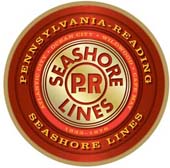 Gettin' To The Shore On The PRSL: In the early 20th Century, Atlantic City was considered the crown jewel of the New Jersey Shore. The town was founded in 1854 when a rail line was constructed from Camden, New Jersey to AC. The Atlantic City Boardwalk was the first boardwalk in the United States, opening in 1870. Gettin' To The Shore On The PRSL: In the early 20th Century, Atlantic City was considered the crown jewel of the New Jersey Shore. The town was founded in 1854 when a rail line was constructed from Camden, New Jersey to AC. The Atlantic City Boardwalk was the first boardwalk in the United States, opening in 1870.
The 1920s and '30s are considered by many historians as Atlantic City's golden age. Many Fortune 500 companies once had stores or showrooms on the Boardwalk - General Electric, Lucky Strike and Underwood Typewriter. General Motors had a showroom on the Steel Pier. H. J. Heinz once had an entire pier of its own. All to showcase products to the hordes of tourists who strolled the boardwalk. People used to 'walk the boards' in winter, believing that the salt air was good for their health.
While people came from all over the eastern seaboard to visit, the vast majority of regular tourists came from Philadelphia and its suburbs. There were no high speed roads to Atlantic City until the 1960s, so many people arrived by train.
The Pennsylvania-Reading Seashore Lines was born ... (more >>>)
Why Rick Steves Loves Those European Trains ... and why we don't want them: Randall O'Toole wrote a very insightful article about European rail transport versus American rail - light and otherwise.
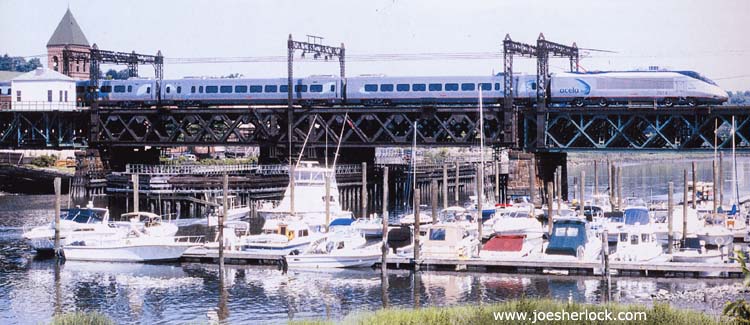
Tourists may be enjoying public transport in Europe but locals less so. In fact, "from 1970 to 2010, all forms of travel grew in the EU-15, but auto and air travel grew the most. Air's share of total travel grew from 1.5% to 8%, while auto's share grew only from 73.9 to 74.7%. Bus, urban rail, and intercity rail all lost market shares."
Unfortunately, those Euro Railpasses are no longer the bargain that they used to be. Not for locals and not for tourists, either.
In the U.S., railroads are privatized and, therefore profit-driven. They chose money-making freight hauling over money-losing passenger service. The unprofitable passenger end of the business was eventually dumped on Amtrak.
"Most European countries didn't nationalize their railroads for ideological reasons. Instead, they often did it because they feared the railroads would be controlled by another, wealthier country. The Netherlands nationalized their railroads because they feared German control; the Belgians nationalized theirs because they feared Dutch control; the Italians nationalized theirs because they feared Austrian control; and so forth."
"America moves almost six times as many ton-miles (or tonne-kilometers) of freight by rail as Europe, while both move about the same number of tonne-kilometers by road. While Europe moves about twice as many tkm of freight by waterway as the U.S., we move six times as much oil by pipeline."
Watch a few episodes of Rick Steves' travel show on PBS and you'll be positively drooling over the romance of traveling on an exotic rail line and chatting with colorful locals while taking in the sights through sparkling clean windows.
But neither Mr. Steves nor his fellow tourists use the transit systems during peak periods or when the weather is nasty. Try getting sardine-packed into a dank subway car with 273 sweaty humans at rush hour in August. (Especially in Europe where hygiene habits are a bit more ... ummm ... casual.) Or waiting for a filthy overcrowded bus when it's cold, dark and pouring rain. Not so romantic, eh? That's why people use cars. And will continue to do so. Especially in the U.S.
Mass transit. Nobody in the U.S. wants it. Because it is designed for the masses. Too Karl Marx-y. Yet, the government keeps trying to stuff it down our throats. (posted 5/27/16, permalink)
Bah, Humbug! Sadly, Santa will not be rolling into Vancouver, WA on the SP&S 700 steam locomotive this year.
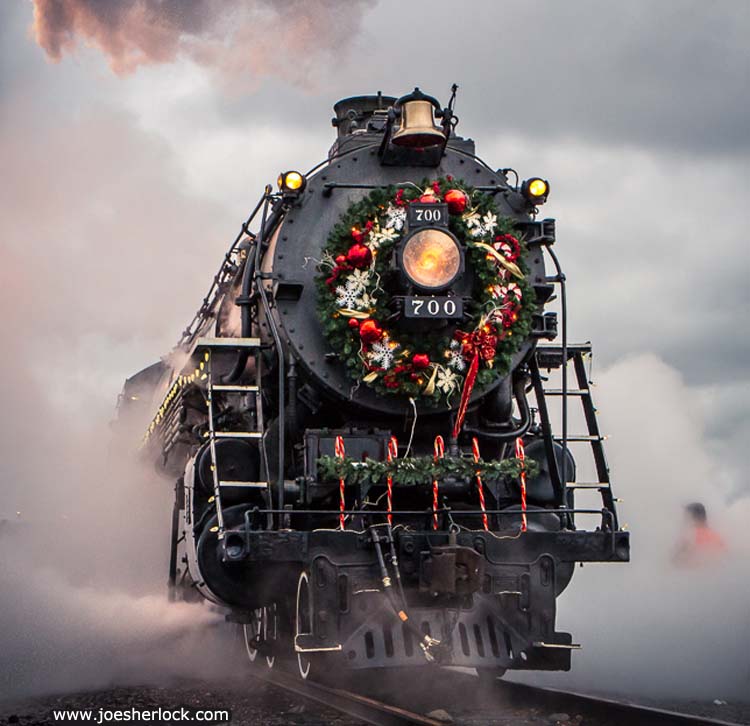
"Unfortunately this year, the person who coordinated it every year retired in the fall," BNSF Railway spokesman Gus Melonas said. "We hope we can bring this tradition back next year." (posted 12/21/15, permalink)
Tragedy At Frankford Junction: Eight people were killed and dozens injured, six critically, when a northbound Amtrak train derailed on May 12, 2015 near Frankford Junction in Philadelphia. "One car was severely damaged, its stainless steel carbody twisted and ripped open, the result of hitting a catenary/signal truss structure."
The locomotive came off the rails and almost slid into a row of tank cars parked at Frankford Yard, a holding yard next to the main trackage. Loco #601 was puling seven Amfleet passenger cars. The Amtrak ACS-64 Cities Sprinter electric loco was introduced a couple of years ago. It is based on Siemens' EuroSprinter, which is capable of 135 mph top speed.
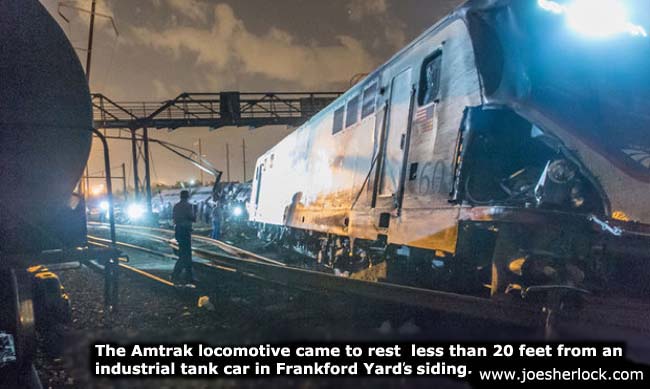
The accident occurred on a sweeping curve which is banked and has been rebuilt with concrete railroad ties in order to handle the high-speed Amtrak Acela trains. The speed limit on the curve is 50 mph. According to the Wall Street Journal , "An Amtrak train involved in a fatal crash here appears to have been traveling at more than 100 miles an hour as it entered a sharp curve where it derailed .... according to two people with knowledge of the investigation." NTSB investigators pegged the speed at 106 mph after reviewing data from the locomotive's black box. The northbound train was carrying 238 passengers and five crew members when it derailed around 9:30 pm.
I'm very familiar with Frankford Junction. My dad worked out of there as a railroad freight conductor (Pennsylvania Railroad, Penn Central and Conrail) for 42 years, retiring in 1979. I last visited the junction in 1999.
Frankford Junction was the site of a similar accident in 1943. On September 6th (Labor Day) of that year, the Pennsylvania Railroad's crack train, the Congressional Limited, with 541 passengers in 16 cars pulled by a GG-1 electric locomotive, derailed when an overheated journal box on an older dining car burned off, causing an axle to snap. The wreck resulted in 79 deaths and 117 injuries. It was the PRR's worst disaster. (posted 5/14/15, permalink)
Rail Upgrades: The retrofuturistic Zooliner, one of the park trains from the Portland Zoo, is in a shop in Ridgefield, WA, getting a restoration and a power upgrade. As is another Zoo locomotive and tender, the oil-burning Centennial 4-4-0 steam loco - a scaled-down replica of the Virginia & Truckee Railroad's 1872 Reno locomotive.
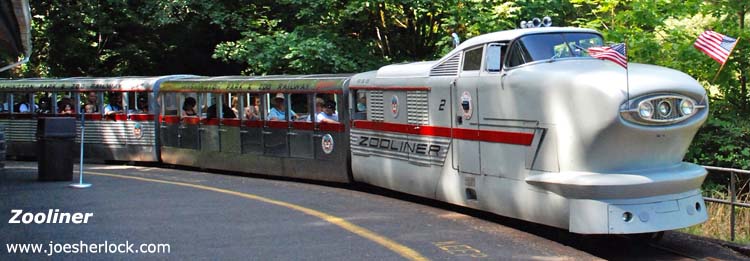
Built in 1958, the Zooliner is a scale replica of the ill-fated General Motors Aerotrain, a mid-1950s 'train of the future'. Both trains run on the Zoo's 30-inch railway. The rail line is being expanded and upgraded; the trains will soon run along a new route "designed to provide unique views of animals," according to an Oregon Zoo news release. It will circle on an elevated trestle in the forest north of a new elephant habitat.
The line is expected to reopen in late Fall. (posted 9/18/14<, permalink)
Iron Giants: Ol' Remus recently wrote about long-gone huffing, puffing steam locomotives. "A baleful headlamp glowered out from tons of hunkered-down malevolence, a cyclops with a steady stare that suggested retreat as the prudent option. They came in black with numbers on their flanks announcing there are more where it came from. No fancy paint jobs with swoopy logos proclaiming 'Quality' or 'Safety'. Black, like the livery of a Victorian hearse. Moriarty would drive one."
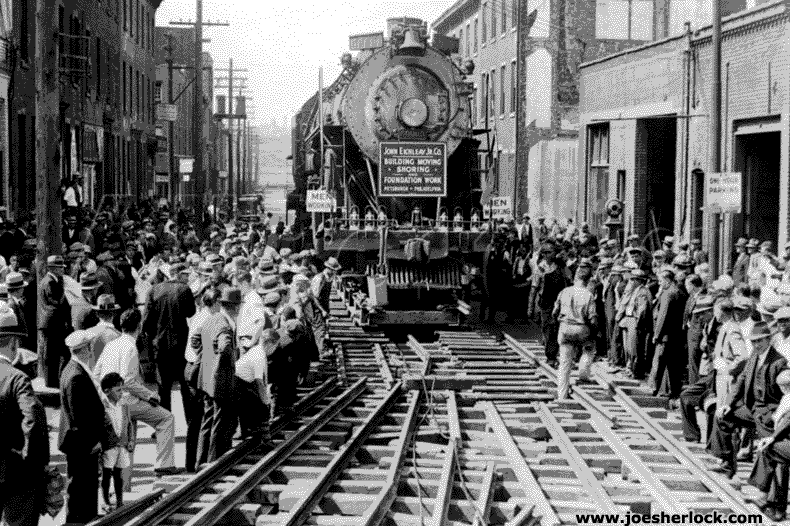
They were inefficient, cantankerous and high maintenance. That's why they were replaced with modern, efficient diesels or electrics. But, when I run steam locomotives on my model railroad layout, little boys' eyes come alive. They enjoy seeing the drivers go around on the wheels and they want to hear the whistle. And see the smoke. It's amazing to me that all children love dinosaurs and steam engines. Both are long extinct, so kids can't relate to the real thing. But they love them anyway.
"Steam locomotives challenged the daily order with their insistent, measured chant and riverboat whistles. They were civilization's phantom of the opera, prompting approving grins on boys and men, and thousands of country tunes with home spun lyrics of travel and tragedy, preferably by dark of night.
Towns reproved them not merely because steam was intrusive and loud, which it most satisfyingly was, but because steam was a fire-and-brimstone colossus that, alarmingly, moved of its own accord, a perpetually impending but useful disaster, a Frankenstein's monster, unnatural life beyond appeal or persuasion, a necessary neighbor that crushed hapless haywains caught out at crossings."
As for today's more civilized diesels, Remus quipped, "They look like the box a real locomotive might come in. They're not alive." (posted 12/11/13, permalink)
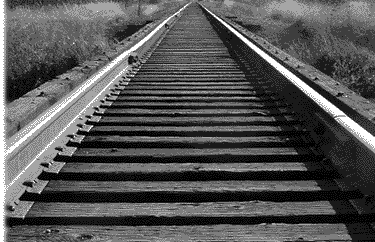 Train Of Thought: Randal O'Toole, is a senior fellow at the Cato Institute, has written about getting the U.S. government out of the passenger rail business. Train Of Thought: Randal O'Toole, is a senior fellow at the Cato Institute, has written about getting the U.S. government out of the passenger rail business.
"Before Amtrak took over the nation's passenger trains, average rail fares were a third less than average air fares. Today, thanks to four decades of government management, average rail fares are more than twice average air fares.
Moreover, subsidies to passenger trains are nearly ten times as great, per passenger mile, as subsidies to airlines (and more than twenty times subsidies to highway travel). When fares and subsidies are combined, Amtrak spends nearly four times as much moving one passenger one mile as the airlines."
This is another example of government waste due to incompetence combined with Congressional meddling.
O'Toole continued, "Still, there might be a case for Amtrak if it were a major transportation provider. It is not. The average American travels about 1,900 miles a year by plane, 15,000 miles a year by car, and around 20 miles a year by Amtrak. Despite Amtrak's brags about record ridership, last year's average of 21 miles per capita was less than in 1990, when it was 24 miles per capita."
In rail freight, the government exited the regional Conrail business and let Norfolk Southern and Chessie take over. The same should happen to Amtrak. Let private industry and the marketplace decide which passenger routes should live or die. (posted 11/15/12
, permalink)
Photos: A selection of full-size train photographs by yours truly has been posted here. (posted 4/30/12, permalink)
See America By Rail: Recently, we had house guests - old friends who had traveled cross-country by rail. They said they'd never do it again: chronically late trains, food and restaurant seating shortages, hard-to-book sleeping accommodations and Amtrak personnel ranging from wonderful to indifferent to rude.
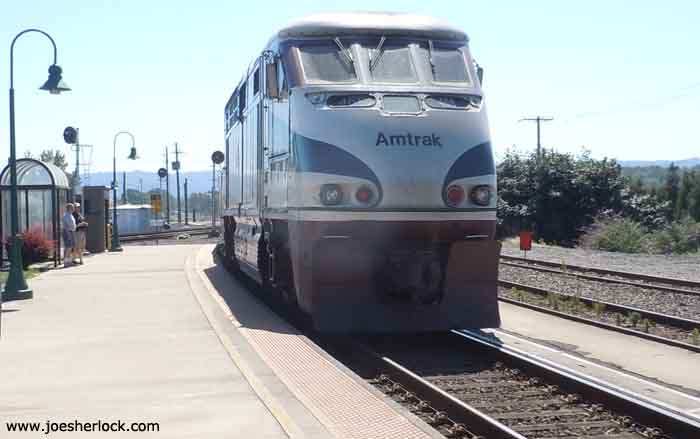
We picked them up at the Vancouver (WA) station which - despite a $650,000 renovation in 2009 - already needed a coat of paint on the building's exterior. (posted 8/3/11, permalink)
Driving Away Prospective Customers: U.S. Senator Charles 'Chuck-the-Loudmouth-Idiot' Schumer has called for "the creation of an Amtrak no ride list. That would take the secure flight program and apply it to Amtrak trains."
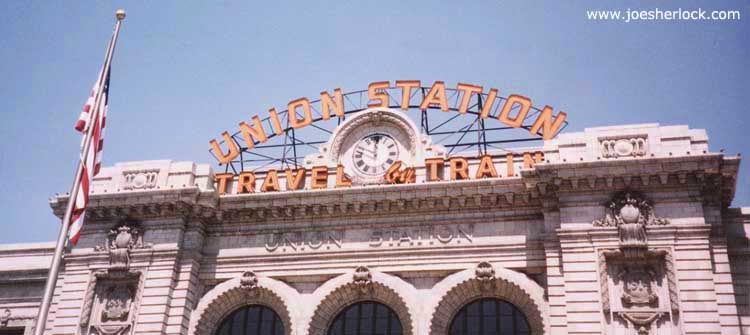
Mitch Berg has written, "Of course, except for the tiny fragment of America living in the congested mid-Atlantic strip, Amtrak is largely on Amerca's 'do not ride' list. Amtrak is an epic money pit.
In vast swathes of the U.S., terrorists would be the only person on an Amtrak train."
On the West Coast, Amtrak trains usually run so late, how would terrorists know when to blow them up?
Dennis Miller has said that we should build a cross-country wall along the Mexican border and put a high-speed rail line on top of the wall, so that TSA has to patrol and protect it. That may be the best use of high-speed rail yet. (posted 5/12/11, permalink)
Irony Alert: On Saturday, Amtrak's Wilmington train station was renamed in honor of Vice President Joe Biden "following major renovations made possible with stimulus funds."
Amtrak CEO and chief ribbon-cutter Joe Boardman got stranded when the high-speed Acela train was stuck in Baltimore. So, he ditched the train and arrived by car. (posted 3/21/11, permalink)
And They Want More Subsidies For What Now? In 2008, Amtrak carried almost exactly the same number of passenger miles as the private railroads carried in 1970, the year before Amtrak took over passenger trains.
"So after 38 years of government ownership - years in which the nation's population more than doubled - intercity rail patronage is right where it was in 1970 (but declining). By comparison, over the same period driving increased by 125% and transit ridership grew by 43% - anemic compared with driving (or almost anything else) but huge compared with Amtrak."
Randal O'Toole (The Antiplanner) has asked, "Doesn't that make you want to blow a few hundred billion dollars on moderate-speed rail?" (posted 6/4/10, permalink)
Derailed: U.S. taxpayers spent about $32 subsidizing the cost of the typical Amtrak passenger in 2008, according to Subsidyscope, an arm of the Pew Charitable Trusts. Forty-one of Amtrak's 44 routes lost money.
Leading the list was the Sunset Limited, has less than 72,000 riders per year, grosses $9.3 million in revenue and loses $31.4 million every year. It lost $462 per passenger. In order to break even, ticket prices would have to be increased more than three-fold.
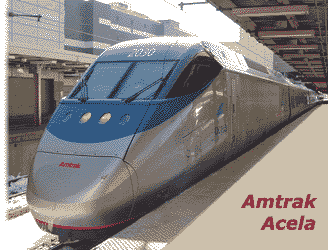 The premium priced, high-speed Acela train makes money as do other trains along the populous N.E. corridor. Such trains carry several million riders per year. But the Virginia-to-Florida, car-carrying Auto Train loses over $10 mm per year. The premium priced, high-speed Acela train makes money as do other trains along the populous N.E. corridor. Such trains carry several million riders per year. But the Virginia-to-Florida, car-carrying Auto Train loses over $10 mm per year.
The California Zephyr, which runs from Chicago to San Francisco, had the second-highest per passenger subsidy of $193 and carried nearly 353,000 passengers in 2008.
The Cascades - with Talgo cars which tilt on curves - runs from Vancouver, BC to Eugene, OR. It produces $41 million in annual revenue but loses $32 per passenger. Prices would have to be raised by 14.3% just to break even.
The Coast Starlight (Seattle - Los Angeles) loses $136 per passenger. Prices would have to be increased by 123.4% just to break even. The Empire Builder (Chicago to Seattle) is a big loser, too. Ticket prices would have to increase by 63.3% just to break even.
These dismal figures should raise several questions: Should governments subsidize U.S. railroads at all? If so, should they be subsidizing them to this extent? Should the biggest losers be terminated, especially those which carry less than 150,0000 riders per year? (posted 11/2/09, permalink)
Your Tax Dollars At Work: Amtrak has received $58.5 million in federal stimulus money to refurbish some of its passenger cars.
The first car, Amfleet Coach 25103, has just been finished at a cost of about a million bucks. The passenger car, built in 1982, had 1.4 million miles on the clock when it was sideswiped in a Florida yard wreck. It was rehabbed in Delaware by workers who used to be employees at now-shuttered area auto plants - Chrysler in Newark and the General Motors plant in Wilmington.
About half the cost of each car's $1 million refurbishing goes toward workers' salaries, officials said. Amtrak runs about 1,500 passenger cars in 46 states on a 21,000-mile route.
A million bucks for a rebuild seems very high to me - as does two million dollars for one new passenger coach - but I'm not an expert in railcar construction/reconstruction. You can get a really nice, detailed O-gauge (1:48 scale) coach car for $100 or less. Multiply that by 48 and you've got - what? - $4,800. I'm just sayin' ... (posted 7/22/09, permalink)
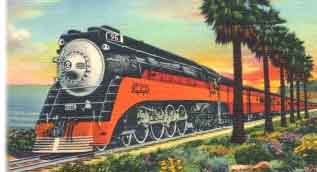 Alcohol Fueled: So, you think the use of ethanol as a fuel source is a 21st Century wonder? Alcohol Fueled: So, you think the use of ethanol as a fuel source is a 21st Century wonder?
Recently, I watched 'Daylight: The Most Beautiful Train in the World', a 2005 railroad documentary hosted by Michael Gross. The film tells the story of the famous Southern Pacific Daylight trains which traveled the Pacific Coast between Los Angeles and San Francisco from 1937 to 1971.
The trains had tavern lounge cars built by Pullman-Standard. Railroad historian Richard K. Wright said that revenues from the tavern car paid for the entire operating cost of the of the Daylight on every trip in the 1930s and '40s. All other revenues - tickets, dining costs, etc. were pure profit.
All hail the power of alcohol! (posted 6/1/09, permalink)
Train Wreck: Randal O'Toole, the Antiplanner, has referred to the Obama administration's high-speed rail plan as "Obama's Recycled Moderate-Speed Rail Plan," noting that it is neither a proposal for Japanese-style bullet trains nor for the Eurostar or trans-Europe TGVs. "Instead, it is conventional Amtrak Diesel-powered trains running a little faster - up to 110 mph, but averaging only 60 to 70 mph - than Amtrak runs today."
|
|
We traveled to and from Paris under the English Channel on the Eurostar train - top speed: 186 mph. I took the photo at Waterloo Station in London in 2001.
|
He pointed out that passengers now pay $69 to ride conventional trains from New York to Washington and $99 to ride high-speed Acela train. Those fares are already subsidized since Amtrak loses money every year.
"By comparison, an unsubsidized bus is $20 and unsubsidized airfares are $99. This means only the wealthy and those whose employers pay the fare will ride high-speed rail. All taxpayers will end up paying for rides of bankers, bureaucrats, and lobbyists."
In other words, people like Joe Biden.
Randal also noted that "Obama's moderate-speed trains will run on the same tracks as existing freight trains. Since many of America's rail lines are near capacity today, there is a real danger that moderate-speed trains will push freight onto the highways."
"Europe's rail network carries 6 percent of passenger travel, while ours carries only 0.1 percent. But European trains carry less than 17 percent of freight, while 73 percent goes by highway.
By comparison, American trains carry 40 percent of our freight, while only 28 percent goes on the highway. In other words, to get 6 percent of passengers out of their cars, Europe put nearly three times as many trucks on the road." (posted 4/22/09, permalink)
Challenger: The Union Pacific Railroad's mighty 'Challenger' locomotive No. 3985 visited Portland in September 2005. The 4-6-6-4 articulated steam monster was on a 2,800-mile tour to celebrate railroad heritage.

I took numerous photos and have posted three pages of them starting here. (posted 9/20/05)
End of an Era: General Motors is selling its LaGrange, Ill.-based Electro-Motive Division to an investment group led by the Greenbriar Equity Group of Rye, N.Y., and Boston-based Berkshire Partners LLC. This is a historic milestone.
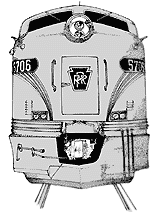 Electro-Motive produced many of the famous diesel 'streamliner' diesels for railroads across America. Famous passenger trains like the California Zephyr, Super Chief, Trail Blazer, Capitol Limited, Empire Builder, North Coast Limited, Southern Crescent, City of New Orleans and Texas Special were at some time or other headed by an Electro-Motive E or F-Series diesel. An Electro-Motive diesel powered the futuristic GM Aerotrain of the 1950s. Electro-Motive produced many of the famous diesel 'streamliner' diesels for railroads across America. Famous passenger trains like the California Zephyr, Super Chief, Trail Blazer, Capitol Limited, Empire Builder, North Coast Limited, Southern Crescent, City of New Orleans and Texas Special were at some time or other headed by an Electro-Motive E or F-Series diesel. An Electro-Motive diesel powered the futuristic GM Aerotrain of the 1950s.
In the early days of locomotive-building, the chief engineer of each railroad had his own idea of how a steam loco should be made. And wrote his personal specifications for every purchase. This drove locomotive manufacturers nuts (or loco?) because it was impossible to offer a stock line of locomotives or build for inventory during slow times. (A very good book, 'The Baldwin Locomotive Works, 1831-1915: A Study in American Industrial Practice' by John K. Brown, offers details.) Baldwin, the largest builder of steam locos, made over 25% of its sales outside the U.S., because foreign railroads didn't have such egotistical engineers and were willing to purchase standardized, more-profitable products.
In the 1930s, GM's Electro-Motive Division developed diesel-electric locos which they offered to various railroads. The chief engineers harrumphed, demanding modifications to their custom specifications - just like they did with steam locos. General Motors - accustomed to building standard products - refused, limiting customization to minor items like marker light location and paint schemes. The diesels were so superior in performance and cost of operation compared with steam that railroad managements ignored their engineers' advice and purchased off-the-shelf diesel-electrics from GM. The steam locomotive soon became a thing of the past.
General Motors changed the locomotive industry forever. But now, the worm gear of progress has turned again and GM is exiting the locomotive business. (Sigh.) Time changes everything. (posted 1/17/05, permalink)
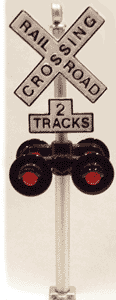 Book Review: I recently read 'Crosswords of Commerce - The Pennsylvania Railroad Calendar Art of Grif Teller' by Dan Cupper. A description: "Each year, starting in 1925, the Pennsylvania Railroad (PRR) commissioned a striking oil painting of a PRR engine in a dramatic setting, which was featured on a large wall calendar that the company distributed by the hundreds of thousands to customers and the public. Grif Teller painted 27 of the 33 scenes. This book reproduces his paintings in full color and recounts his life and career." Book Review: I recently read 'Crosswords of Commerce - The Pennsylvania Railroad Calendar Art of Grif Teller' by Dan Cupper. A description: "Each year, starting in 1925, the Pennsylvania Railroad (PRR) commissioned a striking oil painting of a PRR engine in a dramatic setting, which was featured on a large wall calendar that the company distributed by the hundreds of thousands to customers and the public. Grif Teller painted 27 of the 33 scenes. This book reproduces his paintings in full color and recounts his life and career."
Teller also did work for other railroads and transport companies and did privately-commissioned paintings on various subjects. Surprisingly (since the conventional wisdom is that the 1940s and '50s were times of great job stability working for benevolent, womb-to-tomb employers), he was unemployed several times in his life because the companies he worked for would go out of business. He made ends meet during those times by free-lancing, sometimes using non de plumes on his paintings.
There are a couple of stories about fussy, hard to satisfy customers. ("The box cars need to have more rivets painted on them." ... etc.) We sometimes think that such jerks are something unique to today's economy. Nope. They've been around forever.
There were probably minor functionaries in ancient Rome who got their jollies from hassling some poor chariot maker about the shape of the wheel spokes.
I found this book to be most enjoyable. If you like trains even the slightest bit ... go buy it. (posted 5/22/04, permalink)
PRR Rail History: The above book review has prompted reader comments bemoaning the decline of "old-time railroading."
Once upon a time, U.S. railroads were the kings of transport. Railroads played a large role in the development of the United States from the industrial revolution to the settlement of the West.
In his book, 'Blood, Iron and Gold: How the Railroads Transformed the World', Christian Wolmar wrote, "The U.S. transcontinental railroad was made possible by Abraham Lincoln, who passed the Pacific Railroad Act through Congress in 1862 (in the midst of the Civil War), helped by the absence of southern politicians who had stymied previous attempts at legislation." The transcontinental road was greatly underwritten by the government using direct payments, loans and land grants.
U.S. railroads did more than just increase travel or expand local and national economies. Trains created ... (more >>>)
Amtrak: We rode the Acela from Boston to Washington in October 2004. It was a most pleasant experience.
The rail upgrades are still in progress, so the train had to go slow in spots and the ride was not nearly as smooth as the Eurostar Chunnel Train, but the staff were friendly and the service was very prompt. (Special thanks to Manny the Boston ticket agent who got us on an earlier train with only minutes to spare and made all the changes with a smile.)
It was a thrill to go up and over the Hellgate Bridge into New York City.
The four-track section of the old Pennsy line (south of NY) has been mostly upgraded and we flew through New Jersey. I got jolts of nostalgia from seeing the familiar Philly railscape roll past - Holmesburg Station, Frankford Junction, the Zoo, the stately Art Museum and the spectacular 30th Street Station. The beautifully restored Union Station in D.C. is a sight to behold. And to wander around.
Our Acela train also offered a "quiet car" where cell phone use and loud talking were prohibited. (posted 10/14/04, permalink)
Other Pages Of Interest
copyright 2004-21 - Joseph M. Sherlock - All applicable rights reserved
Disclaimer
The facts presented on this website are based on my best guesses and my substantially faulty geezer memory. The opinions expressed herein are strictly those of the author and are protected by the U.S. Constitution. Probably.
Spelling, punctuation and syntax errors are cheerfully repaired when I find them; grudgingly fixed when you do.
If I have slandered any brands of automobiles, either expressly or inadvertently, they're most likely crap cars and deserve it. Automobile manufacturers should be aware that they always have the option of trying to change my mind by providing me with vehicles to test drive.
If I have slandered any people or corporations, either expressly or inadvertently, they should buy me strong drinks (and an expensive meal) and try to prove to me that they're not the jerks I've portrayed them to be. If you're buying, I'm willing to listen.
Don't be shy - try a bribe. It might help.
|
|

